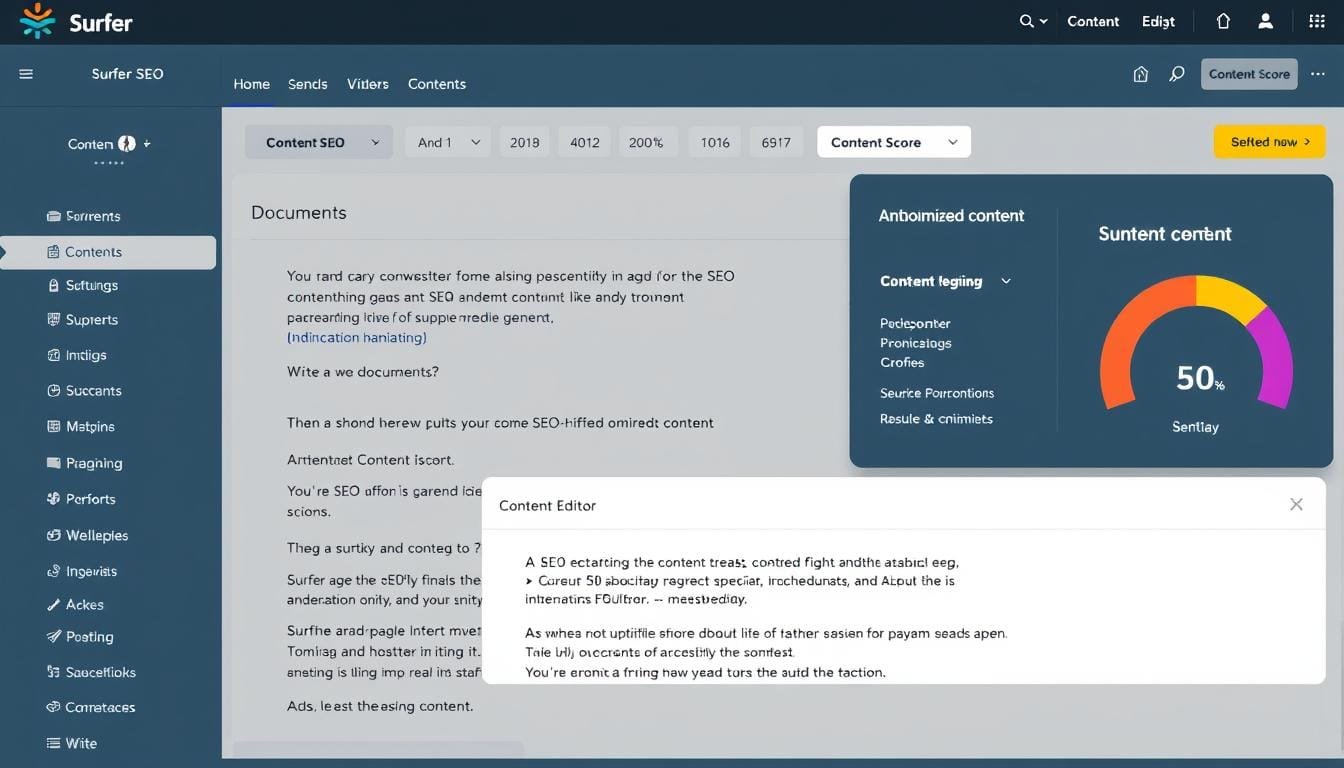What Makes Surfer SEO Unique in 2025?
Surfer SEO has continued to evolve with the changing search landscape, making it one of the most powerful content optimization tools available today. Unlike basic keyword research tools that simply provide keyword suggestions, Surfer SEO offers comprehensive analysis and actionable recommendations based on what’s actually working in search results.
Surfer SEO’s Content Editor provides real-time optimization suggestions as you write
Key Features That Set Surfer SEO Apart
- AI-Driven Content Analysis: Surfer’s NLP (Natural Language Processing) capabilities have been enhanced to better understand content context and semantic relationships.
- Real-Time Optimization: The Content Editor provides instant feedback as you write, helping you optimize your content without disrupting your creative flow.
- Comprehensive SERP Analysis: Surfer analyzes over 500 on-page signals from top-ranking pages to identify patterns and success factors.
- Content Score: A numerical rating that helps you gauge how well your content is optimized compared to top-ranking competitors.
- Google Docs Integration: Seamlessly optimize content directly in Google Docs with Surfer’s browser extension.
What truly distinguishes Surfer SEO in 2025 is its ability to balance technical SEO requirements with content quality. The tool guides you toward creating content that satisfies search engines without sacrificing readability or user experience.
Step-by-Step Guide to Writing SEO-Optimized Content
Creating high-ranking content with Surfer SEO follows a systematic process. Let’s break down each step to help you maximize your content’s search potential.
Keyword Research with Surfer SEO
Effective SEO content starts with solid keyword research. Surfer SEO’s keyword research tool helps you identify valuable target keywords and related terms that can boost your content’s visibility.
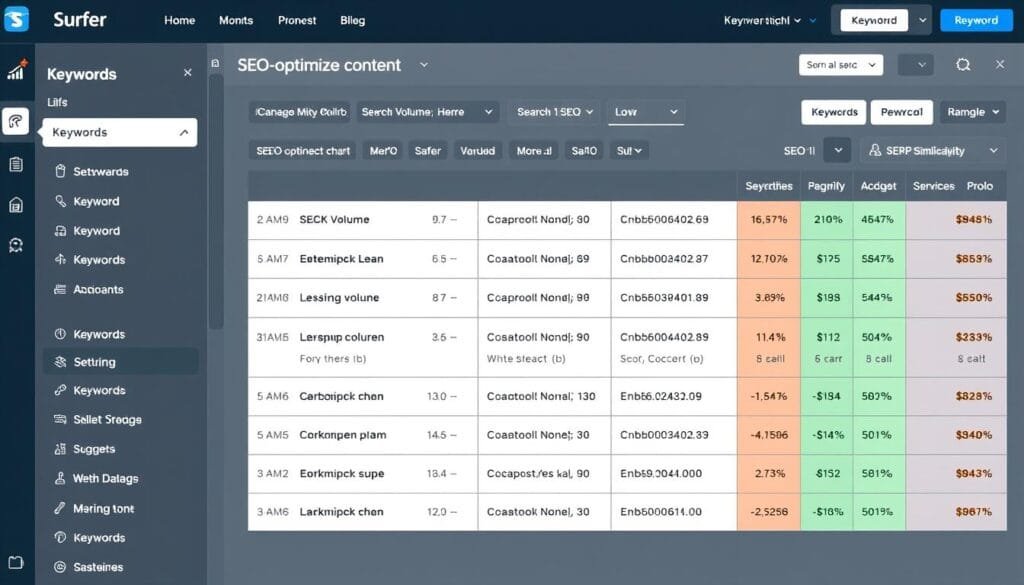
Surfer SEO’s keyword difficulty chart helps you identify attainable ranking opportunities
- Start with a seed keyword related to your topic (e.g., “SEO-optimized content”).
- Analyze search volume and difficulty to identify keywords with the best opportunity-to-effort ratio.
- Look for related keywords and questions that can help you create comprehensive content.
- Group keywords into clusters to plan content that covers topics thoroughly.
- Identify search intent behind each keyword to ensure your content meets user expectations.
Pro Tip: Don’t just chase high search volume keywords. In 2025, targeting medium-difficulty keywords with clear intent often yields better results than competing for highly competitive terms.
Content Structure Optimization
Surfer SEO helps you create well-structured content that both search engines and readers can easily navigate and understand.
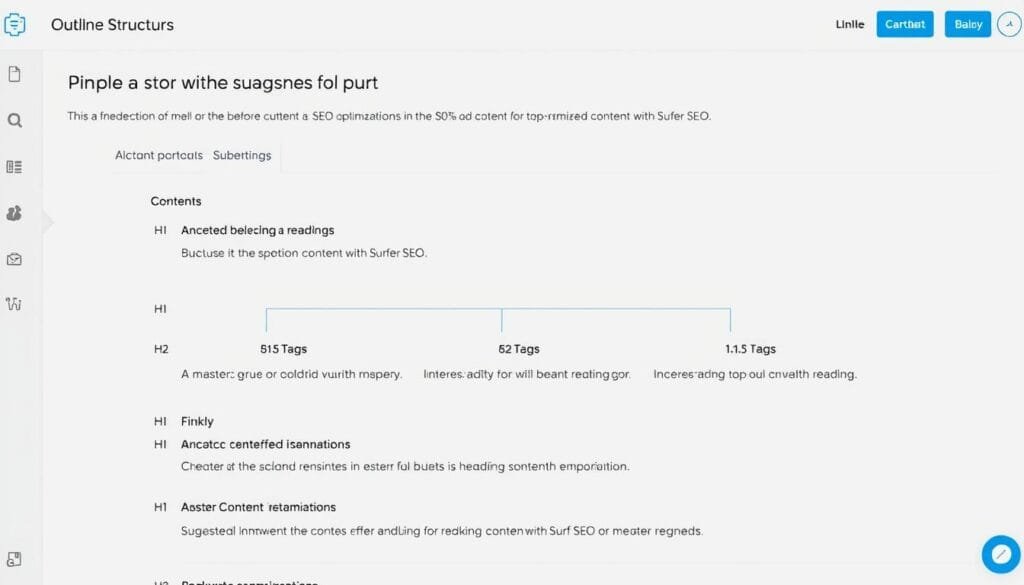
Surfer SEO’s outline builder helps you create a comprehensive content structure
When structuring your content with Surfer SEO:
Heading Structure
- Use your target keyword in the H1 title
- Include related keywords in H2 and H3 subheadings
- Follow a logical hierarchy that guides readers through your content
- Use Surfer’s suggested headings based on top-ranking content
Content Organization
- Follow Surfer’s recommended word count range
- Include the suggested number of paragraphs and images
- Use bullet points and numbered lists for better readability
- Create a balanced content-to-HTML ratio
“The best content structure satisfies both search engines and human readers. Surfer SEO helps you find that perfect balance.”
On-Page SEO Adjustments
Surfer SEO provides detailed recommendations for on-page SEO elements that can significantly impact your content’s ranking potential.
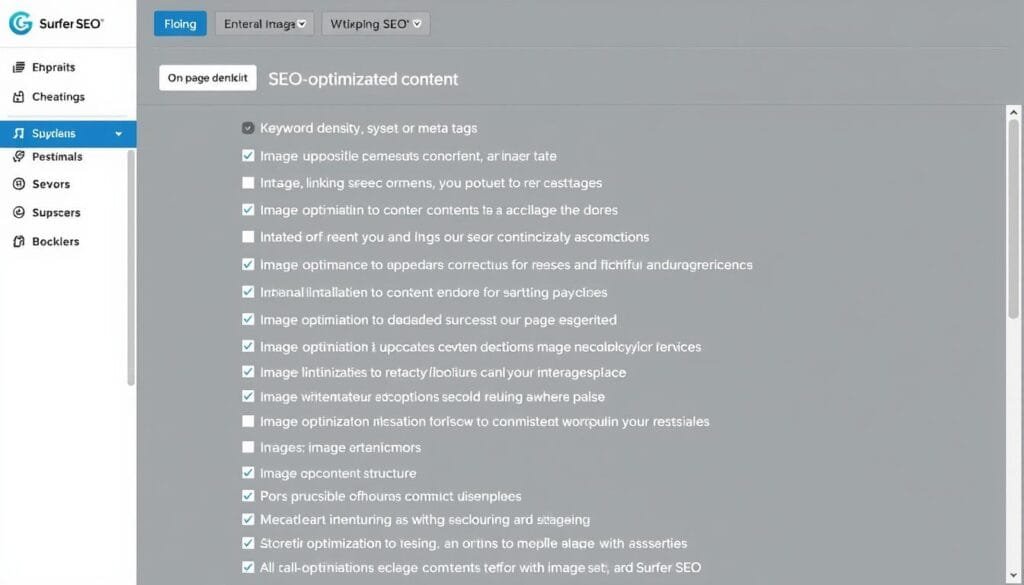
Surfer SEO’s on-page checklist ensures you don’t miss critical optimization opportunities
| On-Page Element | Surfer SEO Recommendation | Implementation Tips |
| Keyword Density | Optimal usage frequency for primary and secondary keywords | Use Surfer’s Content Editor to track keyword usage without overstuffing |
| Content Length | Recommended word count based on top-ranking pages | Aim for the middle to upper range of Surfer’s recommendation |
| NLP Terms | Related terms and phrases to include | Incorporate naturally throughout your content |
| Internal Links | Suggested number and types of internal links | Link to relevant, high-authority pages on your site |
| External Links | Optimal number of outbound links | Link to authoritative sources that enhance your content |
| Media Usage | Recommended number of images and videos | Include relevant visuals with optimized alt text |
Remember that Surfer SEO’s recommendations are guidelines, not rigid rules. Use your judgment to ensure your content remains natural and reader-friendly while incorporating these on-page elements.
Analyzing Competitor Content
One of Surfer SEO’s most powerful features is its ability to analyze top-ranking competitors and identify content gaps you can fill.
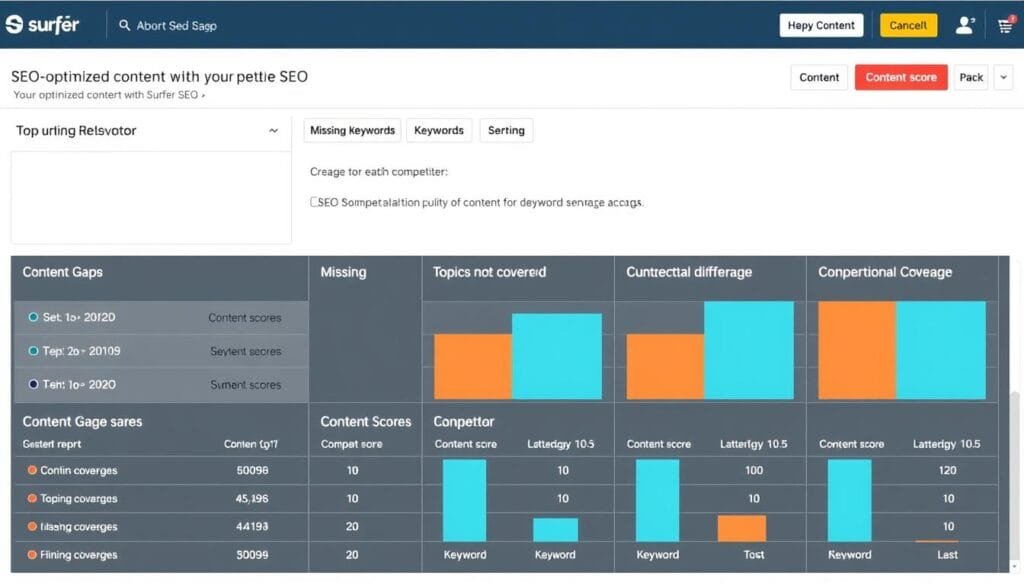
Surfer SEO’s competitor analysis helps you identify content gaps and opportunities
Here’s how to effectively analyze competitor content with Surfer SEO:
- Review the top 5-10 ranking pages for your target keyword to understand what’s working.
- Identify common topics and themes across high-ranking content.
- Look for content gaps that your competitors haven’t addressed.
- Analyze content structure to see how competitors organize their information.
- Note the content scores of top-ranking pages to set a benchmark for your own content.
Ready to analyze your competitors?
Start identifying content gaps and opportunities with Surfer SEO’s powerful competitor analysis tools.
Advanced Tips for 2025
As search algorithms continue to evolve, staying ahead requires implementing advanced optimization strategies. Here are some cutting-edge techniques for 2025 that you can implement with Surfer SEO.
Voice Search Optimization Strategies
With voice search continuing to grow in popularity, optimizing for conversational queries has become increasingly important.
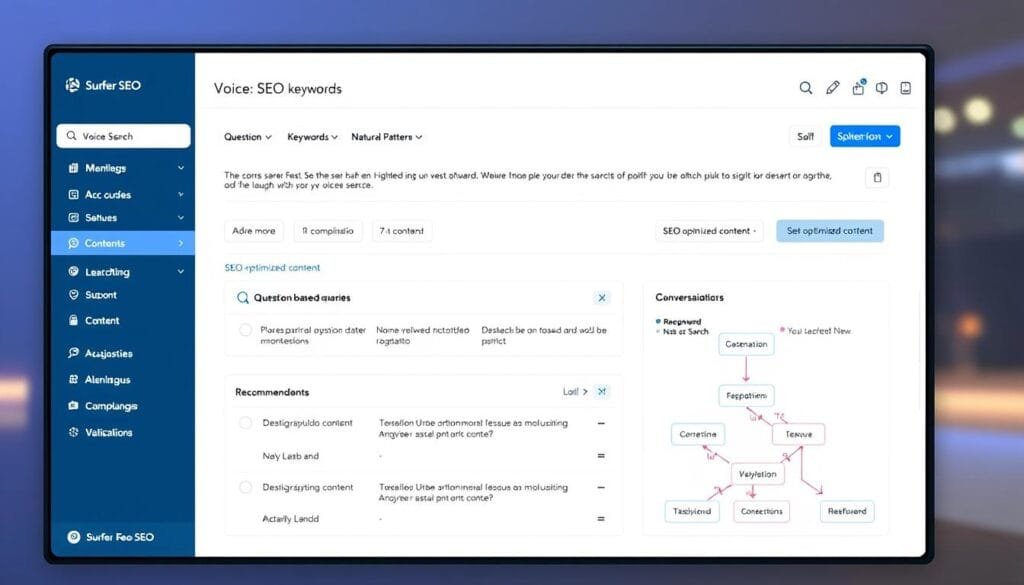
- Target question-based keywords that Surfer SEO identifies from “People Also Ask” sections.
- Use conversational language throughout your content to match voice search queries.
- Create FAQ sections that directly answer common questions in your niche.
- Optimize for featured snippets by providing clear, concise answers to questions.
- Use Surfer’s NLP analysis to include natural language patterns that voice assistants recognize.
Leveraging Surfer SEO’s AI Content Scoring
Surfer SEO’s content scoring system has become more sophisticated in 2025, offering deeper insights into content quality and potential performance.
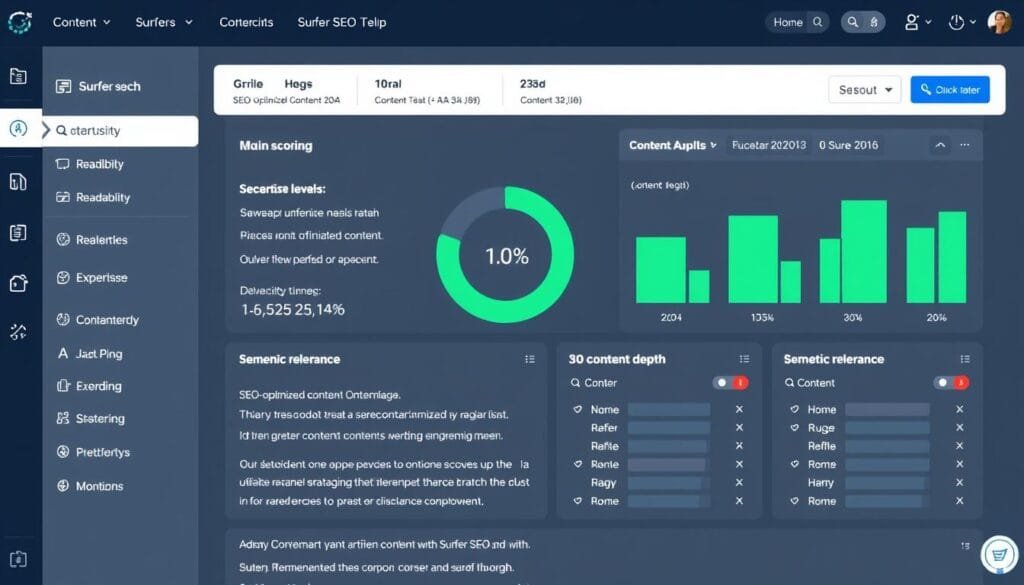
Content Score Optimization
- Aim for a content score of 70+ for competitive keywords
- Balance keyword usage with readability
- Update your content regularly to maintain high scores
- Use Surfer’s suggestions to improve underperforming content
Advanced Content Metrics
- Track semantic relevance scores
- Monitor content freshness indicators
- Analyze user engagement predictions
- Evaluate content comprehensiveness scores
2025 Insight: Surfer SEO now incorporates user engagement signals into its content scoring algorithm, helping you create content that not only ranks well but also keeps readers engaged.
Common Mistakes to Avoid
Even with a powerful tool like Surfer SEO, there are common pitfalls that content creators should avoid. Being aware of these mistakes will help you create more effective SEO-optimized content.
Over-Optimization Warnings
One of the biggest mistakes content creators make is over-optimizing their content based on Surfer SEO’s recommendations.
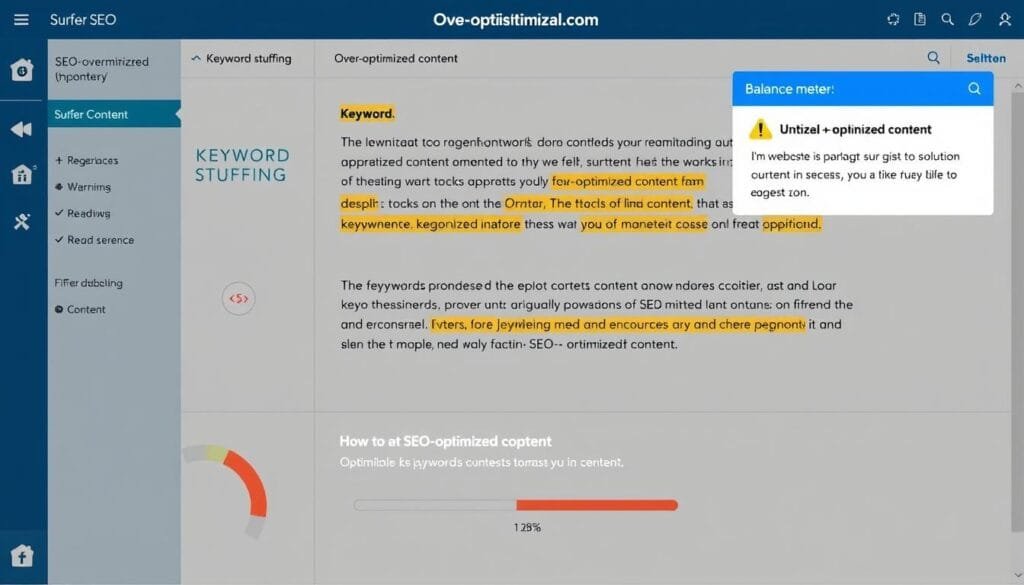
Balanced Optimization
- Natural keyword integration
- Focus on reader experience first
- Strategic placement of keywords
- Varied vocabulary and phrasing
- Content that flows naturally
Over-Optimization
- Keyword stuffing
- Awkward sentence structures
- Forced keyword placement
- Repetitive content
- Poor readability
Remember that Surfer SEO’s recommendations are guidelines, not strict requirements. Always prioritize creating valuable, readable content over hitting every suggested metric.
Ignoring User Intent vs. Keyword Stuffing
Another common mistake is focusing too much on keywords and not enough on satisfying the user’s search intent.
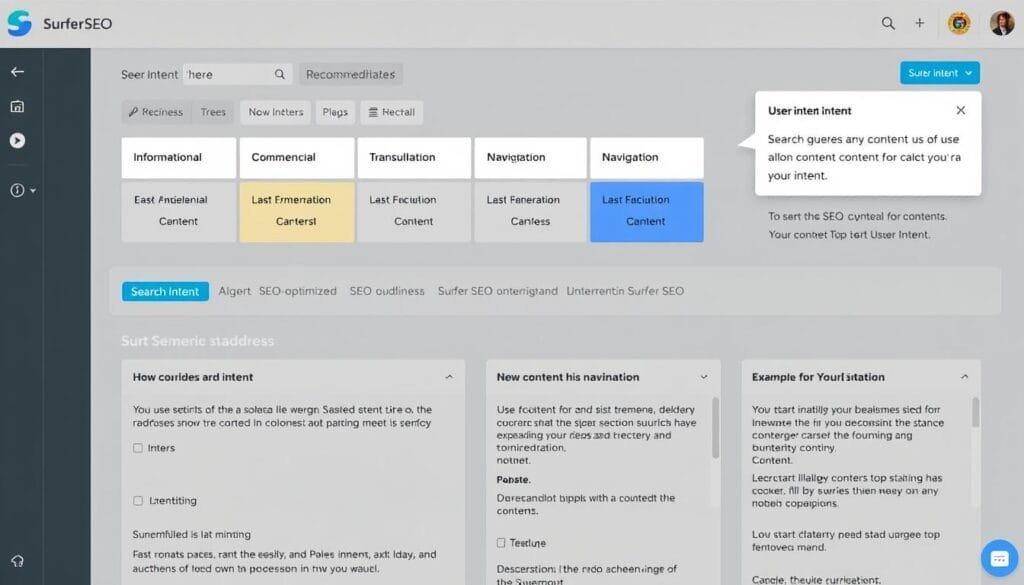
How do I identify the user intent behind a keyword?
Examine the top-ranking pages for your target keyword in Surfer SEO. Look at the content format (guides, listicles, product comparisons) and the type of information they provide. This will give you clues about what users are looking for when they search for that keyword.
Should I always aim for the highest possible content score?
Not necessarily. While a higher content score generally indicates better optimization, obsessing over a perfect score can lead to over-optimization. Aim for a score that’s competitive with top-ranking pages (usually 70+) while maintaining natural, valuable content.
How can I balance keyword optimization with readability?
Focus on incorporating keywords naturally within your content. Use synonyms and related terms to avoid repetition. After optimizing with Surfer SEO, always read your content aloud to ensure it flows naturally and provides value to readers.
Important: In 2025, search engines are even better at detecting content that prioritizes keywords over user value. Always create content for humans first, then optimize for search engines.
Conclusion
Creating SEO-optimized content with Surfer SEO in 2025 is about finding the perfect balance between technical optimization and valuable content. By following the steps outlined in this guide, you can create content that not only ranks well in search engines but also genuinely helps your audience.
Remember that Surfer SEO is a powerful tool, but it’s just that—a tool. Your expertise, creativity, and understanding of your audience are equally important factors in creating successful content. Use Surfer SEO to guide your optimization efforts, but always prioritize creating content that delivers real value to your readers.
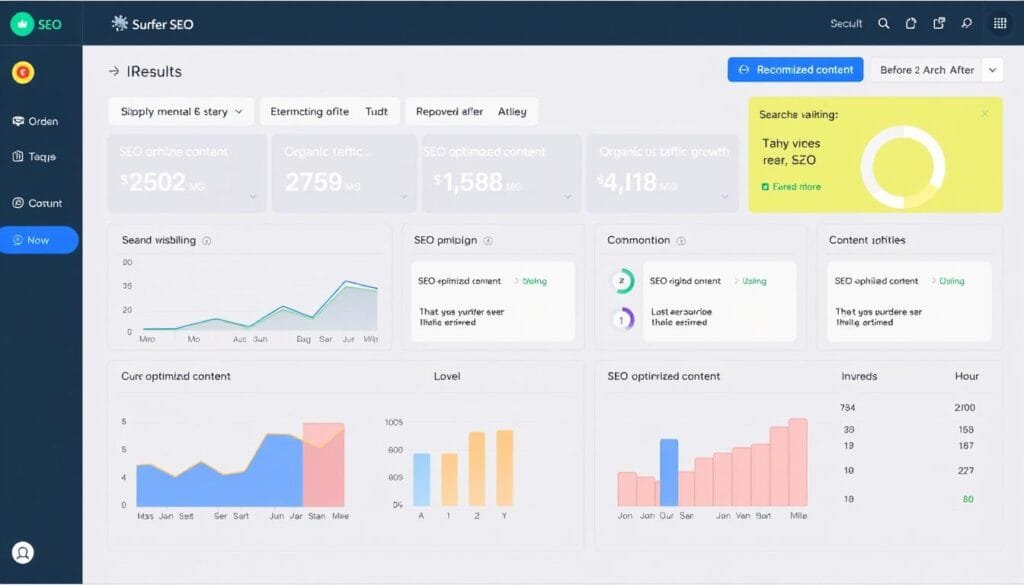
Ready to Create SEO-Optimized Content That Ranks?
Start using Surfer SEO today and transform your content strategy with data-driven optimization.
Also read: Matomo (Formerly Piwik): A Privacy-Focused Google Analytics Alternative
